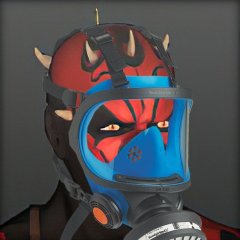-
Content Count
4,769 -
Joined
-
Last visited
-
Days Won
544
Content Type
Profiles
Forums
Blogs
Forum & Tracker Requests
Downloads
Gallery
Store
Calendar
Everything posted by DarthParametric
-

[K1] Changing Appearances of Characters in Cutscene
DarthParametric replied to uwadmin12's topic in General Kotor/TSL Modding
Since debug messages are disabled in the shipping build, there's no real practical way to tell 100% if your script is working as intended. But like I said, KOTOR is not really geared to do exactly what you want anyway, AI-wise. If you want something specific, you may have to brute-force it via scripting, with ApplyEffectToObject. -

[K1] Changing Appearances of Characters in Cutscene
DarthParametric replied to uwadmin12's topic in General Kotor/TSL Modding
KOTOR is not the place to be looking for complex AI. If you check out GN_RunJediSupportAIRoutine in k_inc_generic.nss you will see what the Jedi Support AI does. There is no specific AI routine that will do exactly what you want. If you want a buff bot, you'll have to strip out all offensive powers from your UTC. Even then, don't be surprised if the very first thing the AI does is charge into melee combat and smack things with its glowstick. -

[K1] Changing Appearances of Characters in Cutscene
DarthParametric replied to uwadmin12's topic in General Kotor/TSL Modding
That's because the original names in the source are not preserved in the compiled script. You'll see the same thing with variable declarations. DeNCS just comes up with some labels vaguely suited to the purpose. -
There are three potential cases for a decompile error: The file cannot be decompiled, period (not true in this case). Obtaining bytecode is the only option. The file will only decompile with the game-appropriate nwscript.nss in the DeNCS folder. You have the @JCarter426 disease and can't decompile a script that everyone else can due to some weird system shenanigans. k_trg_calonord2.nss For reading/editing NSS, I would recommend Notepad++ with the Odyssey++ user defined language.
-

[K1] Changing Appearances of Characters in Cutscene
DarthParametric replied to uwadmin12's topic in General Kotor/TSL Modding
That's because the cutscene uses a workaround to avoid using proper stunt animations. It spawns placeable sitters on the bikes, not creatures. Only the global scripts have included source. All module-specific scripts are binary-only and need to be decompiled. Use DeNCS for that. -
- 46 comments
-
- 2
-

-
- community
- compilation
-
(and 3 more)
Tagged with:
-
Since we are airing grievances, another thing is that the activation area for the notification icon seems tiny. Maybe it's not an issue on a phone where you put your finger over the whole thing, but with a mouse it seems like you have to be pixel perfect dead center to get it to register a click.
-
Yeah as well as that, there really needs to be some sort of "collapse header" option. It's pretty and all, but it is obnoxiously huge and takes up far too much real estate. Something like this is what I am suggesting: Even then, there's still so much dead space below it. I get that everything is made for phones these days, but not everybody reads the site on a 5" screen.
-
Don't install an old version of Java (ever, on anything). Grab the latest. DeNCS works fine with it on Win10.
-
I'll take that as a no then. The engine only deals with binary (compiled) scripts, NCS. What I posted was source, plain text (NSS). The game won't do anything with that. You have to compile it first. You can do it via KOTOR Tool, or directly use NWNSSCOMP via commandline. There are also a few other frontends around, like the KOTOR Script Tool (check the Tools section in Downloads).
-
You compiled the script I take it? Put the NCS and UTP in the Override (or module)?
-
Your script resref has too many characters. The maximum filename character count is 16.
-
Works fine here.
-
It won't work in a module you've already been in. The original version of the object will be stored in your save file.
-
No. And if it's the object's OnHeartbeat then it stays OBJECT_SELF.
-
It's a creature script type. OnHeartbeat should work and reapply it even if the party re-enter a module on subsequent occasions.
-
It would need to be scripted. There are a couple of ways to go about it, depending on the circumstances. Could be included in the object's OnSpawn perhaps, or if it is a continually revisited area it may need to be done in the module's OnEnter to ensure it stays up. For the former, perhaps something like void main(){ effect eVFX = EffectVisualEffect(VFX_DUR_SHIELD_BLUE_01); ApplyEffectToObject(DURATION_TYPE_PERMANENT, eVFX, OBJECT_SELF); } For the latter, you'd replace the OBJECT_SELF reference with an object declaration/GetObjectByTag.
-

[KotOR] Help with adding a sleeping (prone) NPC
DarthParametric replied to Salk's topic in General Kotor/TSL Modding
If you don't decompile the vanilla binary model alongside the vanilla binary walkmesh then you won't retain the proper room links in your ASCII, hence why you can't enter the room in your compiled version. You'll need to start from scratch. Extract the WOKs from BIFs -> models.bif -> Walkmesh. Put the appropriate WOK alongside the MDL/MDX when decompiling with MDLEdit. It will store the appropriate room link information in the ASCII model for KMax to properly re-export later. -

Fixed Hologram Models and Admiralty Redux for TSLRCM
DarthParametric commented on DarthParametric's file in Mods
All the "legacypc" version is is the non-bastardised version, i.e. the same as the original CD or GOG versions. The holograms work fine in those. As was the case previously, I suspect the problem this user has is actually the TOR uniform addon to this mod in conjunction with an integrated GPU. That's the only instance where holograms get rendered without the effect that I can recall, due to the normal maps (for which there is a fix supplied with the other mod). -

Fixed Hologram Models and Admiralty Redux for TSLRCM
DarthParametric commented on DarthParametric's file in Mods
-
Random aesthetic mods don't meet the criteria for inclusion in the Community Patches. We try and steer clear of that sort of thing unless it's a case of a pre-existing vanilla asset (like swapping "lite" models for higher poly/higher res texture versions), or there's some fault in the vanilla asset (like broken lightmaps, model issues, etc.).
-

K1 Endgame Cutscene Improvements
DarthParametric replied to DarthParametric's topic in Work In Progress
OK, I think this is done, at least as far as K1CP changes go. I changed the Dodonna backwards walk back to the vanilla version. I'm not keen on it, but it's less egregious than the hacked moonwalking version to get her in the proper position. -

A Huge Apology About KSE
DarthParametric replied to Fair Strides's topic in General Kotor/TSL Modding
That's a missing Visual C++ redistributable binary. Try installing this - https://www.microsoft.com/en-us/download/details.aspx?id=40784 -

K1 Endgame Cutscene Improvements
DarthParametric replied to DarthParametric's topic in Work In Progress
Yeah I'm not changing that. It would be weird to have half a dozen medals magically appear out of thin air, and there's no practical way to actually show the others getting medals pinned on. You'll just have to imagine the others got theirs afterwards. Besides, the entire point is that the player is special, so it's only natural the focus is on them.




